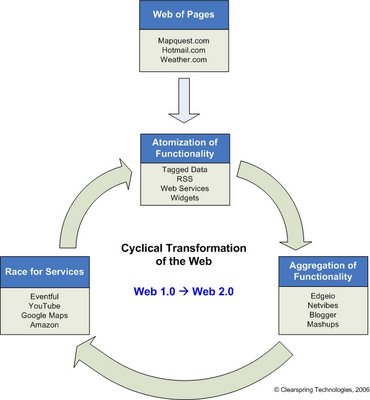
Somebody is finally admitting what everyone else is doing on social networks - STALKING! Stalking is by far one of the single most popular activities on social network systems today. MySpace, for instance,
has managed to achieve a massive network effect not only because their platform enables actionable communication via social networks, but also because the very same tools that enable communication with friends also enable "MySpace Stalking." In other words, since there are a ton of folks on MySpace, there is a much richer base of people to stalk. And because there is such a rich population of potential targets to stalk on MySpace, folks stick around - classic
Network Effect, right?
You all know what I am talking about. Chances are that you have searched for someone (friend, foe, goat...) on
MySpace, or some other social network like
LinkedIn. And, chances are that you have kept up with the multitude of changes in their profile over time. Now you may try to tell yourself that you are simply keeping up with the crowd. And, if that let's you sleep at night, so be it. But let's be serious, you are stalking people.
Anyway, the folks at
Stalkerati are apparently more than willing to admit that folks actively stalk one another on social networks. Accordingly, they have made a search engine that enables you to search for your potential "targets" across multiple sites. For example, imagine that for some insane reason you want to stalk me. Wouldn't it be nice to go to one site to find all my information, instead of visiting multiple several social networks?
This is a neat little idea. The bad news is that the folks at many social networks have closed the gates. You need a login to see others. As such, Stalkerati requires you to login to multiple sites in order to really get down and dirty.
Stalkerati has some fantastic and scary implications for
where the world is heading. Apprently, it even made the
front page of Digg. In short fan-boys, watch yourself - because someone else is most definitely already watching you.
technorati tags:
stalkerati,
stalkers,
myspace,
socialnetworks
 As I was enjoying my daily dose of blogs this afternoon, I had a stunning realization. Pete Cashmore is by far one of the best sources for new information on Web 2.0 - period.
As I was enjoying my daily dose of blogs this afternoon, I had a stunning realization. Pete Cashmore is by far one of the best sources for new information on Web 2.0 - period. 









